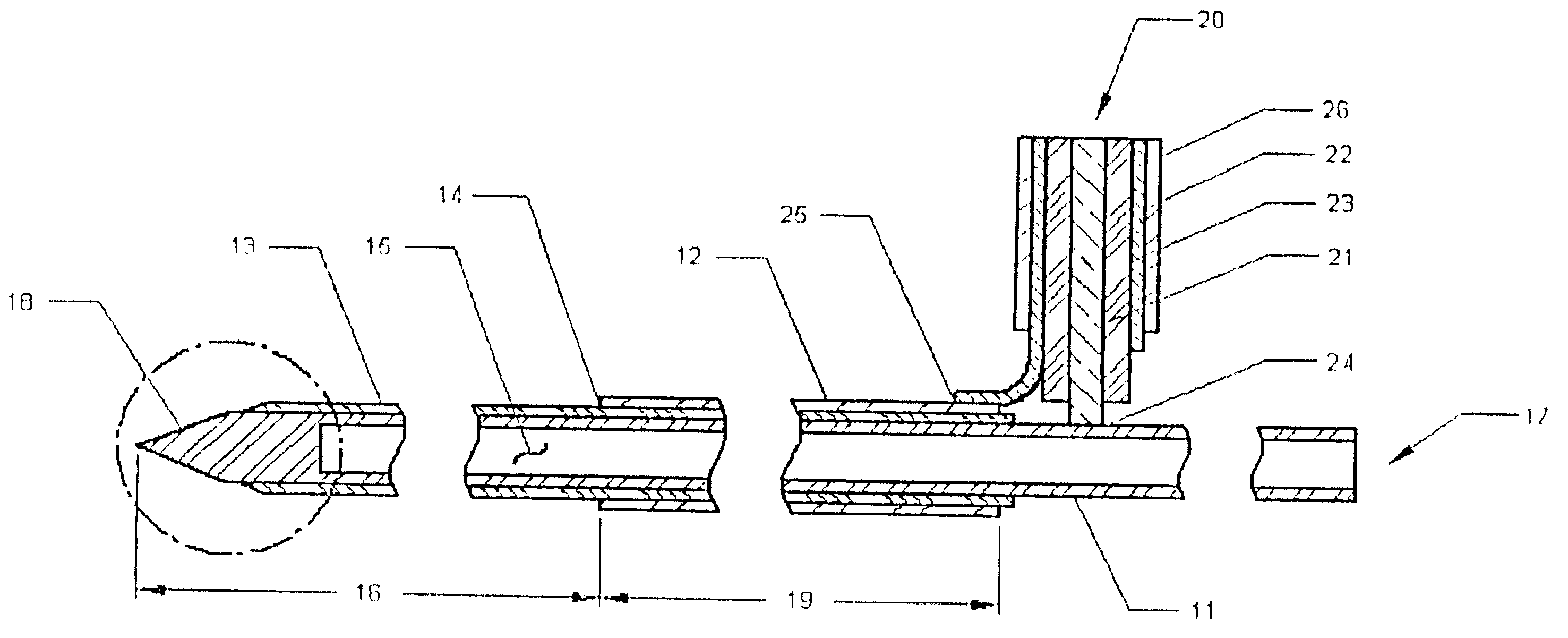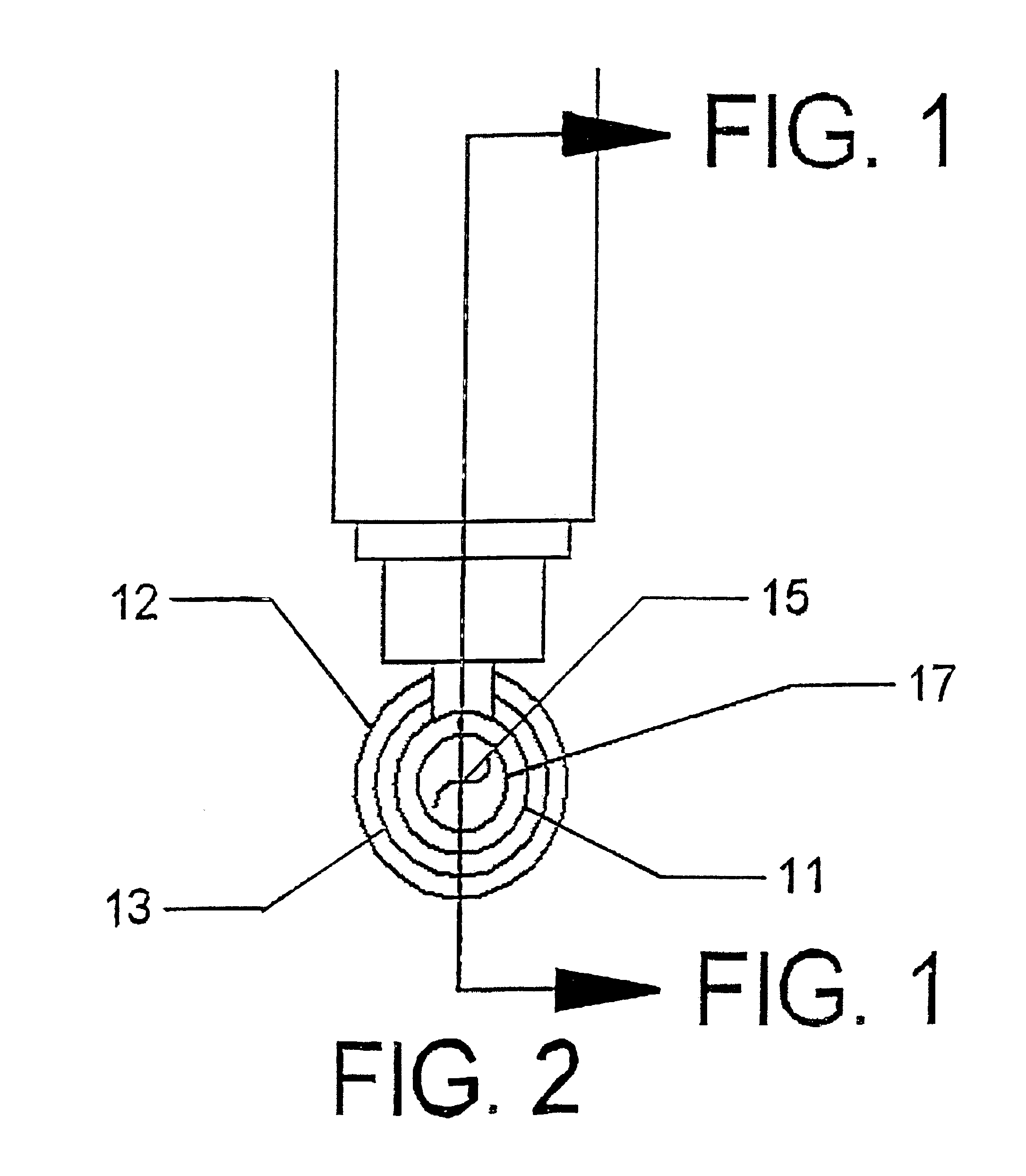Invasive microwave antenna array for hyperthermia and brachytherapy
a microwave antenna array and brachytherapy technology, applied in the field of invasive microwave antenna array for hyperthermia and brachytherapy, can solve the problems of taking about 10 minutes to comfortably get the patient up to treatment temperature, and the metal wire of the brachytherapy equipment would disturb the distribution of mw heating, so as to increase the tumor blood flow and enhance the oxygenation of the tumor
- Summary
- Abstract
- Description
- Claims
- Application Information
AI Technical Summary
Benefits of technology
Problems solved by technology
Method used
Image
Examples
example
[0049]The typical parallel equivalent loading impedance of the tip region 16 of the applicator 10 ranges from about 50 to 100 ohms. This permits the proper selection of the conductor diameters and the length of the outer conductor 12 to obtain an efficient microwave energy transfer to the microwave transmitting section 16 of the antenna. The radiation therapy can be directed by a brachytherapy radiation source in center hollow area 15 of the applicator through the materials of 11, 12, and 13 with little alteration from the radiation applied by the normal brachytherapy catheter. The radiation therapy dose is controlled by the brachytherapy equipment operated by the medical staff. The typical heating region of the applicator is constrained to a diameter of about 3 cm and a length of about 5 cm for an operating frequency of 915 MHz with length 16 equal to about 3 cm. In this example, the outer conductor 12 is preferred to be one full wavelength long (that is 23 cm for Teflon filled die...
PUM
 Login to View More
Login to View More Abstract
Description
Claims
Application Information
 Login to View More
Login to View More - R&D
- Intellectual Property
- Life Sciences
- Materials
- Tech Scout
- Unparalleled Data Quality
- Higher Quality Content
- 60% Fewer Hallucinations
Browse by: Latest US Patents, China's latest patents, Technical Efficacy Thesaurus, Application Domain, Technology Topic, Popular Technical Reports.
© 2025 PatSnap. All rights reserved.Legal|Privacy policy|Modern Slavery Act Transparency Statement|Sitemap|About US| Contact US: help@patsnap.com



